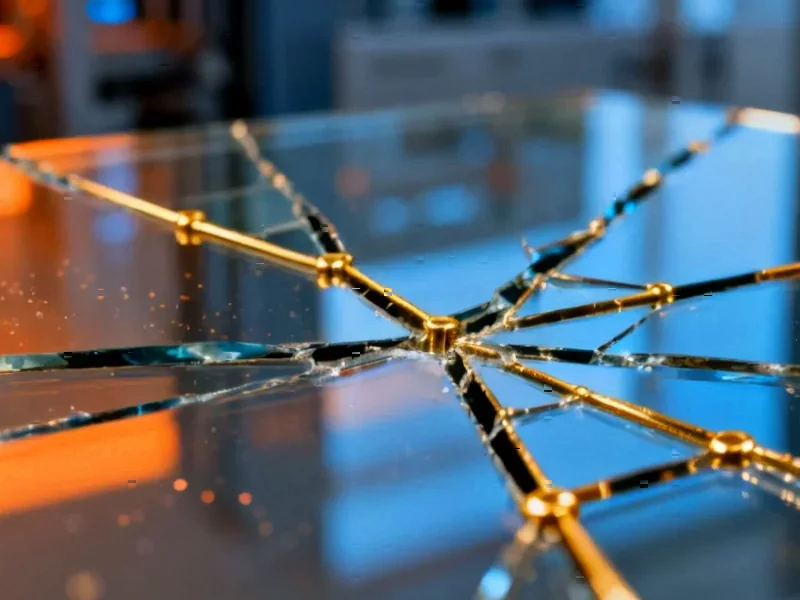TITLE: Researchers Crack Dynamic Scattering Challenge in Imaging Systems
META_DESCRIPTION: Breakthrough computational method enables clear imaging through rapidly changing scattering media, with applications across microscopy and medical imaging.
EXCERPT: Scientists have developed a novel computational approach that overcomes one of optical imaging’s most persistent challenges: seeing clearly through dynamically scattering materials. The technique reportedly works across multiple imaging modalities including fluorescence microscopy and holographic imaging.
Matrix Method Overcomes Optical Scattering
Researchers appear to have cracked a fundamental problem in optical imaging—how to see clearly through materials that scatter light in unpredictable, rapidly changing patterns. According to newly published research, a computational approach based on matrix mathematics can effectively “see through” dynamic scattering media that typically render objects invisible or hopelessly blurred.
Table of Contents
The breakthrough, detailed in recent scientific reports, addresses what experts describe as a longstanding bottleneck in fields ranging from biomedical imaging to industrial inspection. Where conventional imaging systems struggle with materials like biological tissue, frosted glass, or turbulent fluids, this new method reportedly extracts clear images from what would otherwise be useless visual data.
Mathematical Insight Unlocks New Possibilities
What makes this approach particularly noteworthy is its mathematical elegance. Sources indicate the researchers recognized that the imaging equation for a static object viewed through a changing scattering medium has the same mathematical form as that for a changing object viewed through a static medium—just with the roles of object and point spread function swapped.
“This mathematical symmetry is the key insight,” explained one analyst familiar with the work. “They’re essentially treating the dynamic scattering problem as the mirror image of a problem we already knew how to solve.”
The technique builds on existing correlation-based methods like the I-CLASS algorithm, but applies them in what researchers describe as a “time-reversed” configuration. Where previous approaches required multiple illumination patterns on a static object, this method instead captures multiple short-exposure frames of a static object through a rapidly varying scattering layer.
Experimental Validation Across Imaging Modalities
Laboratory demonstrations reportedly show impressive results across several imaging scenarios. In one experiment using a conventional transmission microscope with a rotating diffuser, the method successfully reconstructed detailed images of test targets from what appeared to be completely scrambled raw data.
Perhaps more significantly, researchers also tested the approach with naturally dynamic scatterers—specifically, polystyrene beads flowing freely in solution. Even without any ballistic light component reaching the sensor, the algorithm managed to recover fine features that were completely obscured in individual camera frames.
The method’s versatility was further demonstrated in fluorescence microscopy experiments. Here, the team placed a rotating diffuser between the microscope objective and fluorescent samples, creating the kind of scattering conditions that typically plague biological imaging. Again, the computational approach reportedly recovered clear images of fluorescent beads from heavily distorted raw data.
Coherent Imaging Breakthrough
Perhaps the most technically challenging demonstration involved coherent holographic imaging. Analysts suggest this application is particularly significant because coherent systems are especially vulnerable to scattering effects. The point spread function in coherent imaging becomes a complex speckle pattern that completely scrambles phase information.
Researchers overcame this by carefully controlling the illumination conditions, ensuring the target received consistent lighting despite the dynamic scatterer. The resulting holographic reconstructions successfully retrieved both amplitude and phase information of reflective targets, a capability that could prove valuable for precision measurement applications.
Industry Implications and Applications
The technology’s broad applicability across different imaging modalities suggests potential impact across multiple sectors. Medical imaging stands to benefit significantly—imagine being able to see clearly through living tissue that currently acts as a visual barrier. Industrial inspection systems could peer through turbid fluids or frosted surfaces that currently require physical access.
What makes this approach particularly practical, according to technical analysts, is that it works with conventional optical hardware. The computational heavy lifting happens in software, meaning existing microscope systems could potentially be upgraded with new processing capabilities rather than requiring complete replacement.
The method does have limitations, of course. The requirement for multiple uncorrelated scattering realizations means it works best with rapidly varying media rather than static obstacles. And the computational demands are substantial, though well within the capabilities of modern processing systems.
Still, researchers appear to have opened a new pathway through one of optics’ most persistent barriers. As one industry observer noted, “This isn’t just incremental improvement—it’s a fundamentally different way of thinking about the scattering problem that could reshape what we consider possible in challenging imaging environments.”


